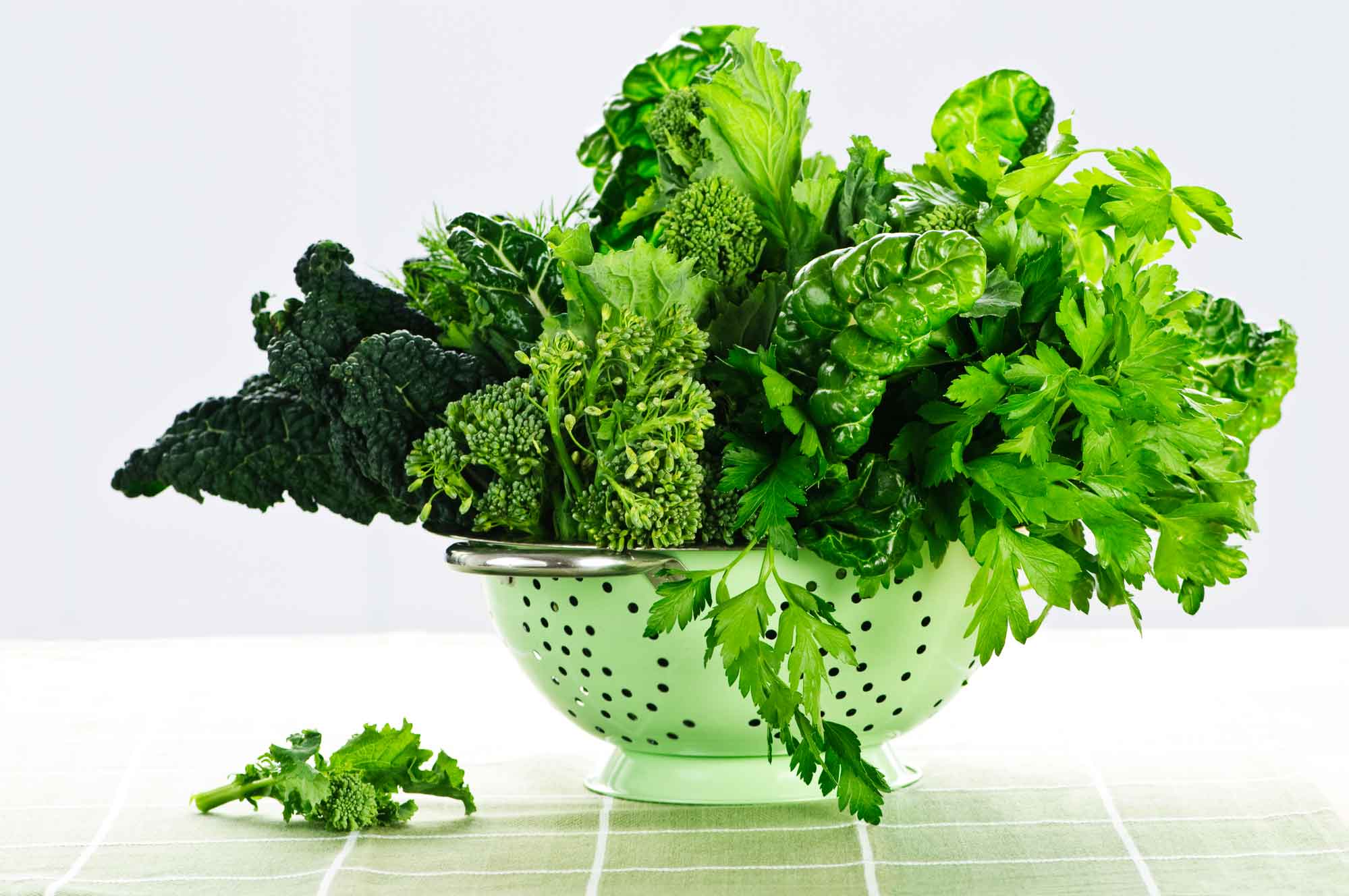There’s a reason kale became the leafy green darling of both the culinary and fitness worlds: This common and affordable supermarket staple is a powerhouse of nutrition. According to the Mayo Clinic, kale is packed with calcium, potassium, copper, manganese, and vitamins A, B6, C, and K. Of course, kale isn’t the only valuable vegetable that is both green and leafy. The health benefits of leafy greens are extensive.
Benefits of Leafy Greens
According to the U.S. Department of Agriculture, dark leafy greens are a great source of vitamins and minerals. Not only do they contain high amounts of vitamins A, C, E, K, and B, but most leafy greens are also high in fiber, iron, potassium, calcium, and magnesium. Among leafy greens, the dark greens stand out as true superfoods. Plants like kale and collard greens are especially high in folate, which the USDA links to heart health and your body’s ability to protect itself from some cancers. In fact, the USDA found that, “diets low in folate may increase the risk of cancers of the breast, cervix, and lung.”
Of course, the specific benefits of leafy greens vary based on the type of vegetable:
Kale
Kale lives up the hype. Not only does it hold up well in the fridge, but also each serving is loaded with key nutrients. This antioxidant-rich green has been shown to protect your eyesight and even your bones. That’s because kale is rich in vitamin K, which your bones need to stay strong. Speaking of bone health, the Huffington Post wrote about the powers of kale and its ability to increase your body’s absorption of calcium. “Studies of calcium absorption from kale have shown its absorption to be superior to milk! That’s because unlike many other greens such as spinach, kale has almost no oxalates that impair absorption.”
Spinach
When it comes to leafy greens, few are as approachable as spinach. This is a classic. Whether it’s in salads, omelets, smoothies, sandwiches, or even stir-fry, spinach is a delicious way to enjoy the benefits of leafy greens. This go-to vegetable is high in folate – a B vitamin that helps your body protect itself against various cancers. Spinach also tops the charts in its level of potassium, which is key to maintaining a healthful blood pressure.
Mustard Greens
These hearty greens are more peppery than kale but are a little less bitter. They’re also an excellent source of beta-carotene, which converts to vitamin A in our bodies. Vitamin A is great for both eye and bone health, which makes these leafy greens a great addition to any diet.
Collard Greens
If you’ve ever traveled to the South, you’ve likely tried collard greens. These leathery leaves hold up well in a skillet, but that strong leaf hides a delightfully mild flavor. The large leaves are also stocked with vitamins K and C plus plenty of beta-carotene and fiber.
Swiss Chard
Another leafy green high in vitamin K is Swiss chard. Whether you pick up the colorful rainbow chard or its white-stemmed cousin, you can enjoy all the vitamins and minerals this lettuce has to offer. Each serving is loaded with vitamin K, so mix some into a potato soup or a vegetable sauté to enjoy the benefits of leafy greens.
Arugula
Small but packed with a bold peppery flavor, arugula is a great source of calcium. It’s also a powerhouse of vitamins A, K, and C as well as folate, calcium, iron, potassium, and magnesium. That cocktail of vitamins helps control blood pressure, which is why the Livestrong Foundation considers arugula a heart-healthy food. Keeping your blood pressure in line can decrease your chance of a heart attack or stroke.
Romaine and Boston Lettuce
If you’re not a big fan of dark leafy greens, don’t worry. You can still enjoy the benefits of leafy greens by eating these two basics. Both romaine and Boston lettuce are high in vitamins K and A.
Ways to Eat More Leafy Greens
Add it to soups: Hearty leafy greens like Swiss chard, kale, and collard greens stand up well in soups. Their thicker leaves retain some of that bite, and they lend a mild flavor to many soups.
Swap it in for bread: If you love wraps or sandwiches, you can substitute romaine or Boston lettuce for that calorie-dense wrap, tortilla, or bread.
Use it in sandwiches: Leafy greens are an excellent addition to any sandwich. If you’re looking for a little crunch but mild flavor, stick with the staples like spinach, romaine, and Boston lettuce.
Make a salad: Mixing different types of leafy greens is a great way to add more texture and color to any salad.
Make a smoothie: Smoothies are a delicious way to get your daily dose of leafy greens. Add some kale or spinach to a blender along with some fruit and milk, and you’ve got yourself a healthful breakfast. For more recipes that use leafy greens, check out this article by Cooking Light.
_____
It’s easy to add some leafy greens to your diet without feeling like you’re eating like a rabbit. Try some new vegetables, and add leafy greens to unexpected recipes (not just salads). Your body will thank you.
If you’re looking for a welcoming community where you can enjoy your golden years, check out The Shores of Lake Phalen in Maplewood, Minnesota. Our state-of-the-art facility is surrounded by a scenic wooded setting near two lakes, and our community offers apartment-style housing with the atmosphere and elegance of a resort. Thanks to the team of dedicated staff members, residents enjoy a carefree lifestyle without worrying about running a household. Schedule a tour to explore our community, or give us a call at 651-777-7784. We look forward to hearing from you!

